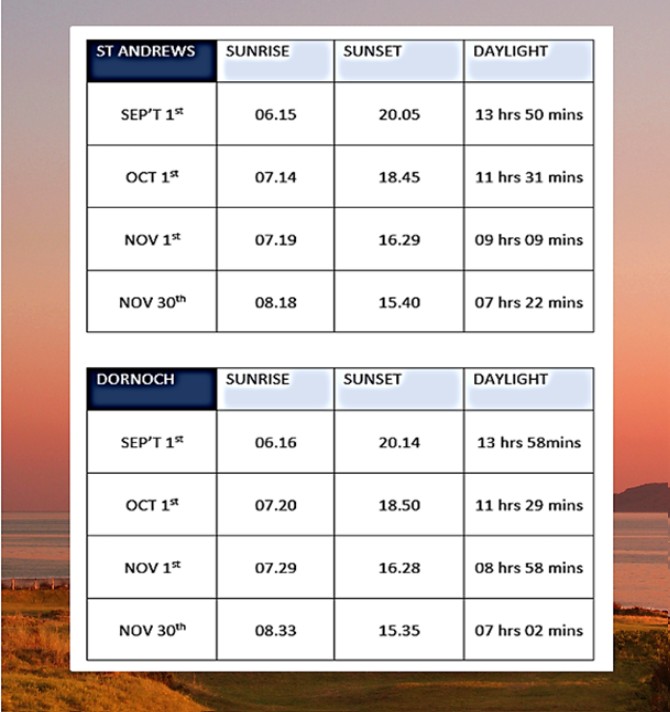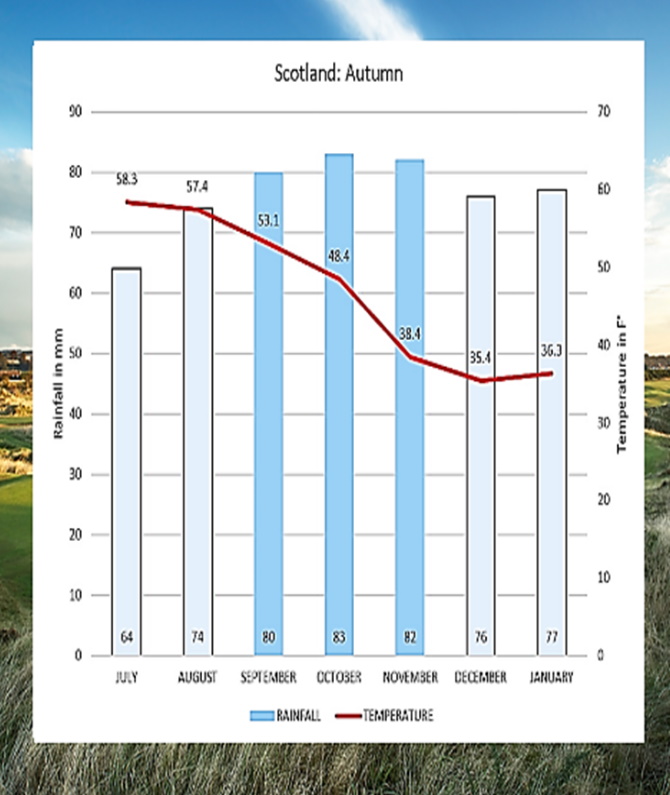
Rather than use generic countrywide data, Faraway Fairways have built our own. We’ve produced a weighted figure based on golfing destinations to reflect the typical composition of a trip, St Andrews (50%), Troon (25%) Edinburgh (15%) and Inverness (10%).
The Fall is the wettest season of the year. It’s also the most beautiful as a tapestry of colour explodes into the landscape. The temperature begin to fall and wind becomes more of a challenge. Many ‘wise heads’ still regard it as the best season to play Scotland though
AVERAGE ST ANDREWS WIND-SPEED
The first ten days of September are clear, but after that the Old Course closes until the second week of October. The members know the best time of year to play and the course hosts a series of annual fixtures and other commitments. Carnoustie and Kingsbarns will also be unavailable in the first week of October as along with St Andrews they jointly host a European tour event. The Links Trust tends to allocate more October tee-times to annual members in the fall than they did in the summer. This means that October is tighter than you think it should be. It performs similarly to May. Things begin to ease by November as demand falls off, but we’re on GMT now and have lost an hour of daylight to the clocks
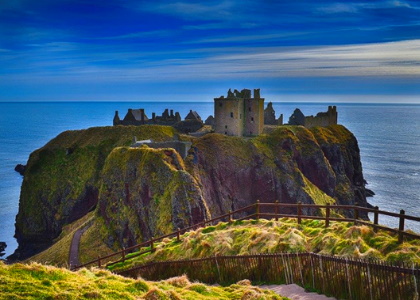

14th Fairway, Image courtesy of Royal Dornoch GC
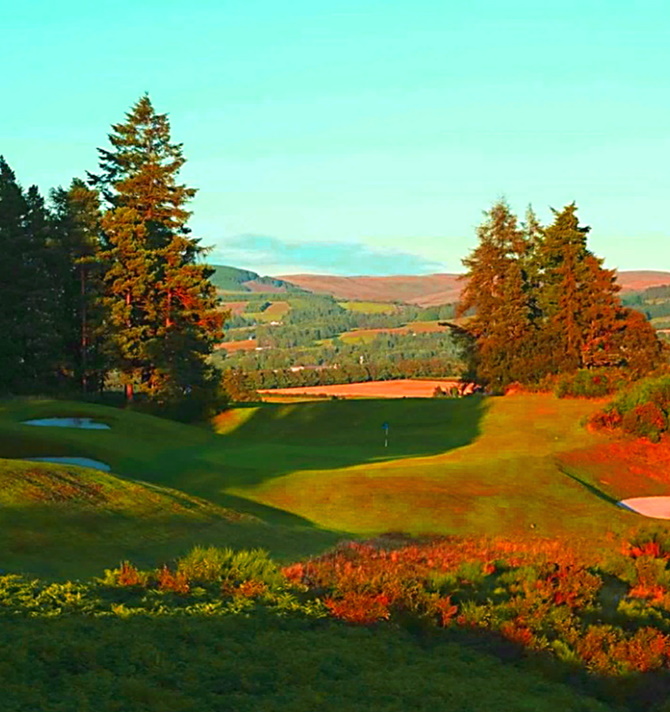
Gleneagles
September characterised by a warming sun and crisp fresh air being swept down from the north. Scottish golf in the fall can be blissful and it’s worth being aware that these conditions can particularly prevail in the Highlands, where the more northerly latitude tends to move the changing seasons forward by about three or four weeks. Autumn comes a little bit earlier to places like Dornoch, Nairn, or Castle Stuart, and that means it begins to weave a tapestry of rich colour into the landscape. Catch these conditions right, and Scottish golf in the fall is probably the very best that Scotland has to offer
The absence of St Andrews for the second half of the month reduces pressure elsewhere, notably Carnoustie and Kingsbarns
By the time October rolls around we’re getting into the tail end of the peak season. Royal Troon will usually be amongst the first to close their books to visitors by the middle of the month. Many courses, including St Andrews and Carnoustie begin to introduce a second ‘shoulder season’ in mid-October until 1st of November. Green fees are typically about 33% less than they were at the beginning of the month.
The UK switches to Greenwich Meantime at the end of October which costs us a further hour of daylight
October is the wettest month of the year on the west coast, and perhaps best avoided
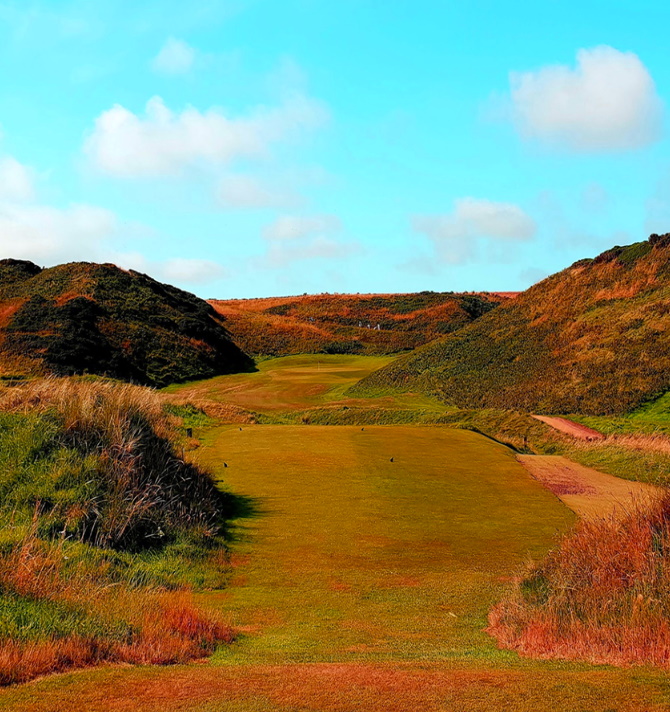
Cruden Bay
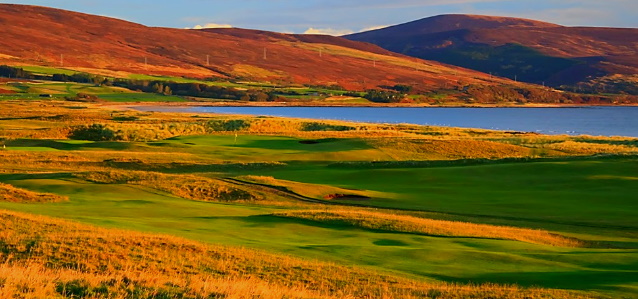
Most courses have moved onto half-price winter rates by November. Muirfield leave this decision a bit later, and settle for the middle of the month, but after that you can begin picking up half price play in a lot places without necessarily coming under winter rules
Kingsbarns closes in November for maintenance and you would probably best be advised to discount it from your planning
The early part of the November is normally still quite playable in most regions. The courses of the Highlands usually offer some particularly attractive terms as they seek to squeeze the last few drops out of the season. If you ‘go for it’ you do run an enhanced risk of weather disruption, and we wouldn’t really encourage you to do so after the 15th.
At these northern latitudes we get extended daylight in the summer and reduced daylight in the winter. If you use the summer months judiciously, you can add what amounts to two or three days on a 7-10 day itinerary. You need to quickly get into the habit of realising that your day needn’t finish at five o’clock. If you go deeper into the evening you can easily play a second twilight round, or take-in some non-golf activity, (particularly landscape which isn’t opening time restricted). You can easily put 200 miles away in an evening in the Highlands for instance and still be back before dark
